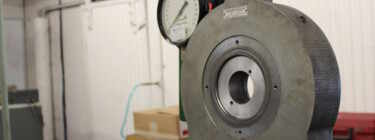I'm content, satisfied with this amazing high safety installation that without joking is most likely to be the safest installation in 20 miles radius.
And no, I'm not that far out

I'm absolutely not telling anyone to make an installation like this.
As it is
not safe according to USA or European standards.
Where the average safety is 2 wires twisted, shielded with a plastic bag and some wire against the rain.
That is here the normal installation.
I got in a huge fight with my brother in law, mixing up the 3 colours of cable at each junction point.
His answer: oh, but you feel m when you have the power wire.
And if you use the wrong other one (aka grounding, yellow/green for us), it does not work.
Simple and basic.
And yes, sometimes the ground wire is here the life wire.
Standard normal installation for most households.
I doubt this is in your house the normal way to treat electricity.
And in Thailand most people are affraid of touching anything electric except light switch, with reason

I doubt this is in your country.
That works in Rural Thailand, will not work in your country.
It's not my first electrical installation.
In Netherlands I had a mining farm in a rental house.
The company liked to check my installation and the guy from professional installation company came by with big fluke test equipment suitcase and thermal camera.
Purring like a kitten.
If all DIY installation was as good as this.....
Even professional builds usually had more noise.
Fire department came to check as well, also impressed by the installation.
It's not that I don't know what or how to install, most things simply aren't here.
Things like in-house cable, the gray one, about 15mm thick, 3* 2.5mm solid core wire....
I really would have liked to use that here also.
Unobtainable.
Din rail...
Post order form China, takes 10 weeks to arrive.
Or actually most parts take 10 weeks to arrive.
Any single part you like to use.
I'm not professional installer and I can't order all the parts needed before installing.
Like most
If it's not obtainable, and you need to wait a long time, and without you are sitting in the dark...
You will use obtainable, things available.
By all means, not perfect, but works.
With unlimited funds, I'll build a separate building for the electricity, with its own cooling system.
New setup, Victron equipment, nice cable rails etc. All nice and sweet.
Then after a year or so, when that is finished (parts take its time)
I'll power it up, switch over to the new setup and rebuild during one or Two years this setup as backup.
Not because I don't have the time, bit it takes ages to get something.
If you aren't depending on what you are using, it's easy to point and say
"do different".
You are invited to do so.
Remember, all the things you don't bring with you, probably aren't available locally.
You probably will need to extend your visa a few times, waiting for the parts to arrive.
Then, and only then are you capable of bashing my installation.
While far from perfect, is amazing compared to normal local standard.
And...
30-40 years from now, your "perfect" installation will no longer be conciddered safe.
Perhaps hard for you to imagine..
Buffalo and cart to transport wood to make charcoal in a clay oven is here normal.
Cooking on charcoal is.
I don't know when the people in the states stoped doing this.
30-40 years ago? Longer?
So if you want to compare with anything, do it with electrical installation of the 70's and 80's rural area, say Alaska?
While New York will have all the Goodies you like... That doesn't help you out there.
That doesn't make the installation in my home or rural Alaska ? your perfect installation.
Absolutely not.
Rules and regulations...
And real life.
While a rule and regulation might require a special fire delaying board to mount the dinrail, the breaker will work just as fine with as without it.
It doesn't need to "push off" on something

Or hold on to something.
Yes, there will be some forces, nothing crazy.
Unless you test it 10.000 times, then one might fail after 9.000 trips.
Just saying...
There is common sense, like knowing you can't put your stereo in 10 and expect the speakers to last year's. That's all according to regulation, not a problem.
Or feeling the need to mout 16A breaker on a fire delayed box as it might go wrong.
Speaker will go wrong, allmost all the time.
Breakers almost never will go wrong.
You should not break the speed limit.
Even in Germany where it is allowed to drive 180 miles per hour, you should stick to the 60 miles USA thinks is safe.
I don't know who have more deaths in traffic due speeding per million...
I doubt any will match the Thai death toll....
I guess this is a country for those who live dangerous





